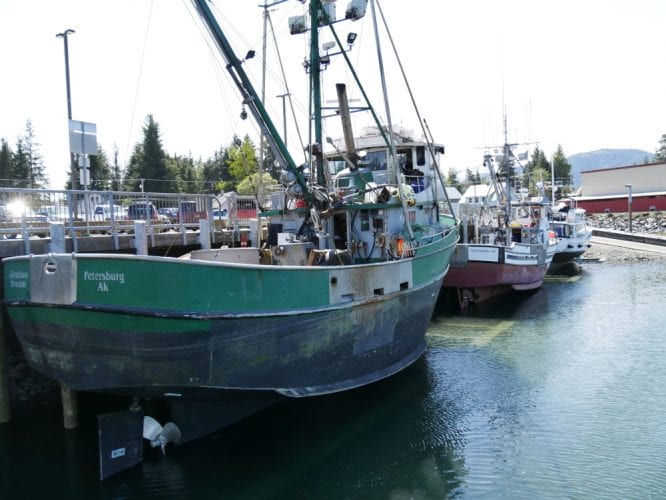
A statewide commercial fishing industry group is asking the Dunleavy administration to justify its proposal on how to distribute $50 million dollars in federal pandemic relief for Alaska’s fishing industry.
Federal guidance recommends allocating more than half of the CARES Act funds to seafood processors and just 5% to the charter fleet and lodges.
But a draft released this month by the Alaska Department of Fish and Game recommends dividing the allocation evenly between sectors, which would increase the pot of money for fishing guides and lodges by more than $13 million.
United Fishermen of Alaska, which represents the commercial fleet and processors, asked the agency to explain its rationale for boosting the charter fleet’s allocation at the expense of other sectors.
UFA’s president Matt Alward signed a three-page letter to the commissioner’s office.
“We were asking the department if they could just provide any data, economic data or economic harm to the different sectors that justifies the split,” Alward told CoastAlaska on Thursday.
UFA also pointed out that while commercial fishermen are required to be Alaska residents, no such requirement is proposed for charter guides to qualify for relief.
The formula also requires applicants to prove they lost at least 35% in revenue during a certain period. That could be difficult for some charter guides given that bookings were strong during the early days of the pandemic, only to be refunded at a much later date, says Jim Martin of the Alaska Charter Association.
“There are some issues, but in general, I think it’s a good plan,” Martin said Thursday.
The Homer-based group and the Southeast Alaska Guides Organization wrote letters generally praising the state’s methodology.
“It was really devastating not to have people come in and try to go fishing in Alaska,” Martin added.
Some $1.5 million would be set aside for subsistence users.
Other letters recommended tweaking eligibility requirements to conform to federal subsistence criteria to ensure relief flows to rural households that rely more heavily on subsistence fishing as a food source.
Otherwise relief could be spread too thinly to help those in need, the letters said.
The processing sector says the federal requirement to document steep losses doesn’t conform to facts on the ground. That’s because companies only operated this season by spending tens of millions of dollars on special housing, coronavirus testing, charter flights for workers and other safeguards, says Nicole Kimball, a vice president of the Pacific Seafood Processors Association based in Anchorage.
“What I’ve heard from processing businesses,” she said, is they seek “reimbursement for some of those direct COVID-19 mitigation costs.”
She cited a recent study that found seafood processors spent upwards of $50 million in COVID-19 mitigation alone.
Seafood companies paid for this out of pocket, she said, “to ensure that we could continue to have commercial fisheries. We could protect the processing workforce, and we could protect the communities, primarily remote communities in which we operate.”
The state will be submitting its final plan to federal authorities after reviewing comments received. The Pacific States Marine Fisheries Commission will be entrusted to review applications and ultimately cut the checks.
Editor’s Note: A quote from Nicole Kimball has been paraphrased to clarify its meaning.











